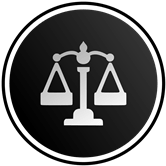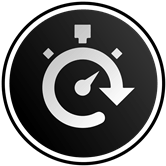Updated on November 01, 2025 05:33:18 PM
Protecting the image of your company requires registration of a trademark, however, there could be obstacles to the process like objections or opposition. If objections or oppositions are brought up at this stage the trademark hearing will be the next step and it is essential to understand the procedure of trademarks hearings in Nagaland for you to be able to move forward. To resolve a problem that arises in the examination report, a trademark hearing can be an official process through the Registrar of Trademarks. This is your chance to establish the identity of your mark with a solid proof and solid argument.
Trademark hearings in Nagaland can be a tense procedure for those facing this for the first time. However, at Litem Legalis our experts are proficient in handling trademark hearings and the resolution of any objections that are made. In this article, you'll be able to learn about the procedure for trademark hearing in Nagaland and practical tips to address concerns, allowing you to successfully complete your trademark registration without any hassles.
To address any objections made during the exam report In order to address objections raised during the examination report, to address objections raised during the examination report, the Registrar of Trademarks holds a formal meeting referred to as a hearing on trademarks. A trademark could be contested for a variety of reasons, such as being too similar to another or being filed under an incorrect class, or having no uniqueness in a marketplace where it must be distinguished.
Hearings on trademarks in Nagaland are typically "show cause hearings." This means that the Registrar offers you the opportunity to defend your trademark. You must show that your trademark is distinctive and that it meets the legal requirements to register to succeed.
Trademark registration gives you plenty of important benefits that will help you to protect and expand your business. In case any objection arises during the registration process,then the trademark registrar will hold a hearing to review such objections.At this time you or your legal representative has to provide proper evidence and argument to support the case.Here are some important benefits of doing trademark registration.
All trademark hearings in Nagaland since 2020 have taken place virtually in India; it makes things more accessible and convenient. However, regarding the filing of trademark applications, the states and union territories have been grouped into five regional jurisdictions. This is how it has been arranged -
A trademark hearing in Nagaland is an essential part of the registration process and is usually scheduled when there are objections to your application.Failing to Sufficiently deal with these objections may result in the rejection of your trademark application.These objections can arise due to the following reasons:
The process of trademark hearing in Nagaland can be quite overwhelming. This is a simplified version of the procedure, which will help you understand each step clearly and prepare accordingly:
After filing your trademark application, the Registrar of Trademarks reviews it. If any issues arise—such as lack of distinctiveness, similarity to an existing mark, or improper classification—the Trademark Examiner issues an Examination Report detailing these objections.
You need to respond to the Examination Report within 30 days from the date of its issuance. Your response should address all objections, properly justified with supporting documents.
If your response is insufficient, the Registrar issues a Hearing Notice. This notice specifies the objections raised and provides the date and time for your hearing.
Preparation is key to a successful trademark hearing. Here’s what you should do:
On the scheduled date, either you or your attorney must appear before the Registrar (or hearing officer).The Registrar will hear both sides, including any remarks from the Trademark Examiner, before making a decision. The process typically involves:
After the hearing, the Registrar may:
In some cases, the decision is announced immediately, while in others, it may take a few days.
An ideal trademark should represent the essence of the product or service, and should be recognizable and memorable. Following are the most important characteristics to look for in making a strong trademark that will hold up to strength under the law:
To effectively plead your case, you will need the following documents:
If your trademark status reads "ready for show cause hearing," it means the Registrar has scheduled a hearing for your application. This status indicates that your application has objections requiring clarification or evidence. Think of it as a checkpoint where your trademark’s fate will be determined based on how well you present your case.
To effectively plead your case, you will need the following documents:
In the end, getting the legal protection you need for your brand's name is largely dependent on the Nagaland trademark hearing process. It can appear to be a complicated task to come up with a well-thought-out argument, strong supporting evidence, and an immediate response to the objection when creating the document. But, implementing all of these steps will increase your chances of obtaining approval. You should seek out expert assistance to simplify this complicated process so that you can manage the critical trademark registration process with confidence.
One of the states that has a large number of hearings on trademarks is Nagaland. Our aim at Litem Legalis is to streamline the process of hearing trademarks in Nagaland while ensuring prompt and efficient resolution of objections. Our experts will assist you through each step in the process of trademark registration and provide you expert advice and practical advice. To ensure the future of your brand. Call us now to take the next step towards making sure your brand's future is secure.

Legal Consultation

Expert Lawyers

Lowest Fees

Quick Process
A trademark hearing is a formal proceeding where the Registrar examines objections to a trademark application and allows you to present evidence to address concerns.
Trademarks face objections due to reasons like lack of distinctiveness, similarity to existing marks, descriptiveness, or classification errors.
Preparation involves reviewing the examination report, organizing evidence like invoices and marketing materials, and presenting a clear argument.
Post-hearing outcomes may include application approval, requests for further clarifications, or rejection based on the Registrar's decision
Disclaimer: The content provided on this site is intended for informational purposes only. Accessing or utilizing this site and its materials does not establish an attorney-client relationship. The information contained herein does not constitute legal or professional advice and should not be relied upon as such. It is not a substitute for obtaining legal counsel from a qualified attorney licensed in your jurisdiction.